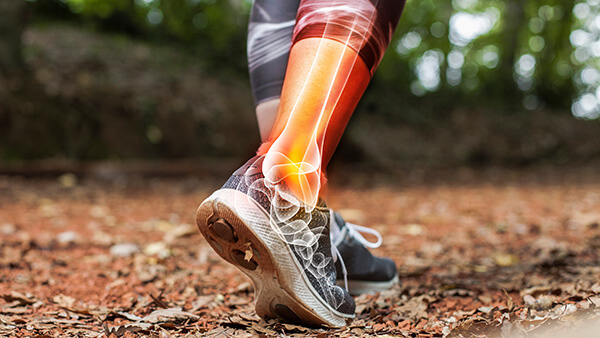 Reviewed by Brian Shiu, M.D. – Board-Certified Orthopaedic Surgeon, Sports Medicine Specialist
Reviewed by Brian Shiu, M.D. – Board-Certified Orthopaedic Surgeon, Sports Medicine Specialist
Differentiating between injuries and muscle aches can be a common concern for many individuals, especially those who are physically active. Understanding the difference between the two is crucial for proper treatment and prevention. While muscle soreness is often a normal response to exercise, sports injuries require more attention and care.
In this article, we will explore the distinguishing factors between sports injury symptoms and muscle soreness, providing you with valuable insights to help you stay healthy and active. Read on to discover how to identify what your body is telling you and how to effectively address any discomfort you may be experiencing.
Differentiating between sports injuries and muscle soreness
1. Onset of Symptoms:
Sports Injuries: Symptoms often develop suddenly, either during physical activity or shortly after.
Muscle Soreness: Discomfort typically appears gradually, peaking within 24 to 48 hours after intense exercise.
2. Nature of Pain:
Sports Injuries: Pain may be sharp, stabbing, or localized to a specific area. It may worsen with movement or specific activities.
Muscle Soreness: Pain is usually dull, achy, and generalized across muscles involved in the activity. It often improves with rest.
3. Swelling and Bruising:
Sports Injuries: Swelling, bruising, or visible deformity may be present, indicating tissue damage.
Muscle Soreness: Swelling is uncommon, and there are typically no visible signs of tissue damage or inflammation.
4. Range of Motion:
Sports Injuries: Limited range of motion in the affected joint or muscle group may be evident, indicating potential ligament, tendon, or muscle damage.
Muscle Soreness: Range of motion is generally unaffected or minimally restricted, except due to discomfort from sore muscles.
5. Location of Pain:
Sports Injuries: Pain is often localized to a specific joint, muscle, or tendon directly involved in the activity or trauma.
Muscle Soreness: Discomfort is spread across the muscles involved in the activity, such as the entire lower body after running or cycling.
6. Duration and Persistence:
Sports Injuries: Symptoms may persist or worsen over time if left untreated, and they may interfere with daily activities or sleep.
Muscle Soreness: Symptoms typically improve within a few days with rest, light stretching, and hydration, and they do not significantly impair daily function.
7. History of Injury:
Sports Injuries: Previous history of trauma or overuse in the same area may increase the likelihood of a recurring injury.
Muscle Soreness: Occasional soreness after strenuous activity is normal, especially if the activity intensity or duration is increased.
8. Professional Evaluation:
Seek medical attention if:
- Pain is severe or persistent.
- There is significant swelling, bruising, or deformity.
- There is difficulty bearing weight or using the affected limb.
- Pain is accompanied by numbness, tingling, or weakness.
- There is uncertainty about the cause or severity of the symptoms.
General Tips for Pain Management and Injury Prevention
1. Listen to Your Body:
Pay attention to the type and intensity of pain. Muscle soreness typically feels like a dull ache or stiffness, while sports injuries often present with sharp, acute pain.
2. Rest and Recovery:
Give your body time to recover. Muscle soreness generally improves with rest, gentle stretching, and proper hydration. If pain persists despite rest, it may indicate a more serious injury.
3. Apply the R.I.C.E. Method:
- Rest: Avoid activities that exacerbate the pain.
- Ice: Apply ice to the affected area for 15-20 minutes every few hours to reduce swelling and numb the pain.
- Compression: Use a compression bandage to help minimize swelling.
- Elevation: Elevate the injured area above heart level to reduce swelling.
4. Monitor Symptoms:
Keep track of any changes in pain, swelling, or range of motion. If symptoms worsen or do not improve within a few days, seek medical attention.
5. Consult a Professional:
When in doubt, consult a healthcare professional for a thorough evaluation. An orthopedic specialist can provide a precise diagnosis and appropriate treatment plan.
6. Gradual Return to Activity:
Ease back into physical activities gradually. Rushing the process can lead to further injury. Start with low-impact exercises and gradually increase intensity based on comfort.
7. Preventive Measures:
Engage in proper warm-up and cool-down routines before and after exercise. Incorporate strength and flexibility training to prevent future injuries.
8. Use Proper Equipment:
Ensure that you use appropriate gear and footwear for your specific sport or activity. This can help reduce the risk of injuries and support overall joint health.
9. Stay Hydrated and Nourished:
Proper hydration and nutrition play a key role in muscle recovery and overall joint health. Maintain a balanced diet and drink plenty of water to support your body’s needs.
10. Educate Yourself:
Understand the common injuries associated with your chosen sport or activity. Being aware of these can help you recognize symptoms early and take preventative measures.
Key Takeaways
Remember, early intervention is key. Taking the right steps towards recovery can make a world of difference in your athletic journey. Always listen to your body and seek professional advice if you’re unsure.
Our fellowship-trained sports medicine physicians are here to help! If you have any further questions or require more information, don’t hesitate to reach out to us at (410) 337-7900.



